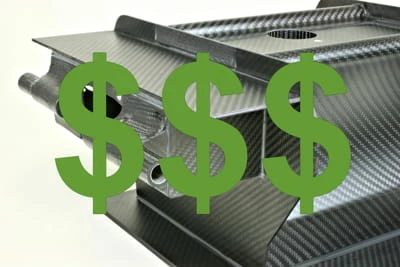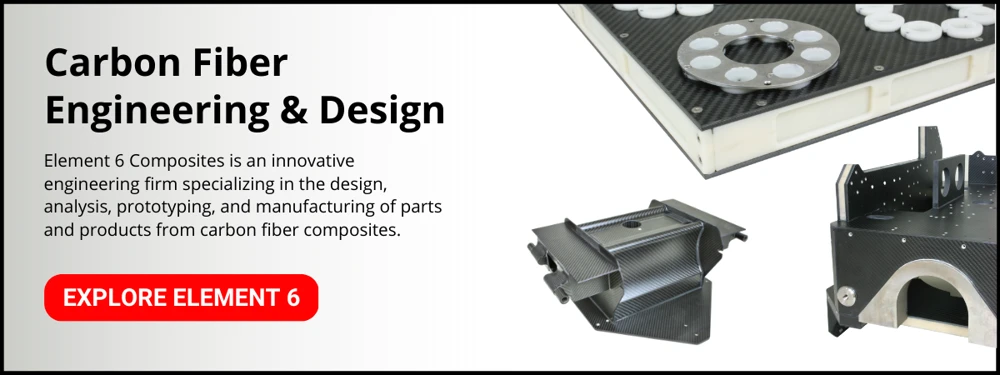Why Are Carbon Fiber Parts So Expensive?

Carbon fiber is growing in use as an alternative to aluminum, steel, and other metals, due to its mechanical properties and light weight. Its versatility and ability to be customized add to the seemingly infinite uses for carbon fiber, as innovations in material science and manufacturing techniques continue to evolve.
Carbon fiber has a reputation for being expensive when compared to other materials like steel and aluminum. But the carbon fiber material itself is not the only reason that carbon fiber parts can be expensive. There's also the manufacturing processes, the need for skilled labor, and other materials that go into producing carbon-fiber products.
Keep reading to learn what makes carbon fiber parts more expensive when compared to other materials.
Processing and Economies of Scale
Carbon fiber is often compared to metals such as steel and aluminum due to their relative strengths. The production of carbon fiber, however, is very different from the production of metals.
Metals such as steel and aluminum are derived from raw ore which is converted directly to an end product or provided as a bulk material to be later formed or fabricated into an end product. The methods involved are time-tested, standardized processes that have evolved over hundreds of years.
Carbon fiber production, however, is a much more involved process. Mechanical and Chemical processes are utilized to manipulate the atomic makeup of organic polymers in long, thin strands to create carbon fiber tows. Thousands of these tows are then embedded in a resin matrix to create composite products. Composite manufacturers use proprietary formulas, processes, and combinations of materials to produce a wide variety of composite laminates that meet the strength and mechanical requirements for specific parts.The entire process is time-consuming with many steps that must be carefully controlled and monitored to achieve the required specifications.
From a volume perspective, carbon fiber is relatively specialized depending on the end-product or performance requirements for the intended application.
Custom designs are often used to specifically address the material needs for a given project. The "standard products" available from manufacturers likely started as a unique design to replace a metal or other material to enhance performance but may offer a wider adoption to the market.
Metals are generally viewed as commodities with market prices determined by supply and demand. The high volume use of steel in civil projects and shipbuilding has an obvious impact on the economies of scale. Global steel and aluminum production are measured in millions of tons where carbon fiber is thousands of tons. The wider adoption of carbon fiber in the aerospace industry is beginning to narrow this gap. Metals, however, will continue to be produced in higher volumes for applications where the use of carbon fiber is not advantageous.
Performance and Return On Investment (ROI)
The material properties and integration of metals into specific end-uses are well-known and based on historical experience and widespread use. Their performance and costs are widely understood and predictable in the design for any given application. Carbon fiber is not as clearly defined at this time.
The aerospace industry weighs the expense of using carbon fiber against the performance benefit of a longer flight range due to a significant reduction in weight of an aircraft or spacecraft. In the long run, the premium associated with carbon fiber is worth the additional manufacturing cost.
Industrial automation weighs the per-piece cost against the benefit of lighter-weight materials for increased production line speeds, reduced wear and load on motors and actuators, and energy consumption. Given the enormous benefits gained, the cost of carbon fiber is easily justified by the increased life cycle and improved performance.
When using advanced materials such as carbon fiber in a product design, engineers must determine which material properties are most important for the specific application and the impact on product cost versus the gain in performance. Contact DragonPlate to find a creative solution to bridge the gap between cost and performance for your product.
